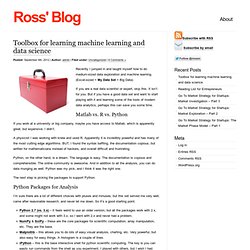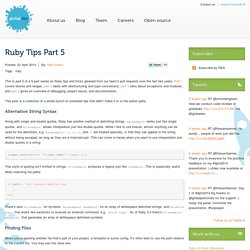

Bayes' Theorem Illustrated (My Way) - Less Wrong. (This post is elementary: it introduces a simple method of visualizing Bayesian calculations.

In my defense, we've had other elementary posts before, and they've been found useful; plus, I'd really like this to be online somewhere, and it might as well be here.) I'll admit, those Monty-Hall-type problems invariably trip me up. Or at least, they do if I'm not thinking very carefully -- doing quite a bit more work than other people seem to have to do. What's more, people's explanations of how to get the right answer have almost never been satisfactory to me.
If I concentrate hard enough, I can usually follow the reasoning, sort of; but I never quite "see it", and nor do I feel equipped to solve similar problems in the future: it's as if the solutions seem to work only in retrospect. Minds work differently, illusion of transparency, and all that. I've mentioned before that I like to think in very abstract terms. So what's the right way to explain Bayes' theorem to me? Ross's Blog » Blog Archive » Toolbox for learning machine learning and data science.
Posted: September 6th, 2012 | Author: admin | Filed under: Uncategorized | 9 Comments » Recently I jumped in and taught myself how to do medium-sized data exploration and machine learning.

(Excel-sized < My Data Set < Big Data) If you are a real data scientist or expert, skip this. It isn’t for you. Getting Started - Git « Some thoughts, ideas and fun!!! Overview In this article I’ll be covering some the things you may need to know about Git.

I’ll try and go into the concepts that Git puts out there as well as how to start using it successfully. Round-up of Web Browser Internals Resources - HTML5Rocks Updates. In many cases, we treat web browsers as a black box.

But as we gain a better understanding of how they work, we not only recognize where to make smart optimizations but also we push them farther. The links below capture most of the resources that explain the innerworkings of web browsers. <img src=" class=big> How Browsers Work: Behind the scenes of modern web browsers, by Tali Garsiel How Browsers Work – Architecture, by Vineet Gupta Know Your JavaScript Engines, by David Mandelin From Console to Chrome, by Lilli Thompson <img src=" class=big> Fast CSS: How Browsers Lay Out Web Pages, by David Baron What Browsers Really Think of your App, by Alex Russell Faster HTML and CSS: Layout Engine Internals for Web Developers, by David Baron CSS Selectors parsed right to left.
Say hello to Unicode - kos.gd. Unicode is a standard that defines several things.

Here is a handful of some most important facts about it: There are thousands of “code points” that represent characters in various alphabets, numbers, punctuation, various symbols, etc. Each of these has a name and a number. Here are some examples: LATIN CAPITAL LETTER ALATIN SMALL LETTER C WITH ACUTEDIGIT SEVENMINUS SIGNSUPERSCRIPT TWORIGHTWARDS ARROWBLACK CHESS ROOKDifferent code points may share their appearance, or “glyph” (like OHM SIGN and GREEK CAPITAL LETTER OMEGA).Code points are grouped into blocks like “Basic Latin” or “Mathematial Operators”. They also are divided into categories like “Letter, Uppercase”.There are some “encodings” that provide a mapping between code points and their bitwise representation.
MrSwitch/hello.js · GitHub. Introduction to Bayesian Methods. Frequentism and Bayesianism IV: How to be a Bayesian in Python. Chuck Eesley: Forming teams, brainstorming ideas. Method references. Ruby Tips Part 5. This is part 5 of a 5-part series on Ruby tips and tricks gleaned from our team’s pull requests over the last two years.

Part 1 covers blocks and ranges, part 2 deals with destructuring and type conversions, part 3 talks about exceptions and modules, and part 4 gives an overview of debugging, project layout, and documentation. This post is a collection of a whole bunch of unrelated tips that didn’t make it in to the earlier parts. Alternative String Syntax Along with single and double quotes, Ruby has another method of delimiting strings. %q{example} works just like single quotes, and %Q{example} allows interpolation just like double quotes.
Logger.info(%Q{User "#{user.name}" logged in}) This style of quoting isn’t limited to strings, %r{example} produces a regexp just like /example/. If path =~ %r{^/assets/mobile/img} ...end Finding Files When you’re opening another file that’s part of your project, a template or some config, it’s often best to use the path relative to the current file. Here’s a Chapter From My Favorite Business Book.
Traffic Signal Timing Manual: Chapter 4 - Office of Operations.